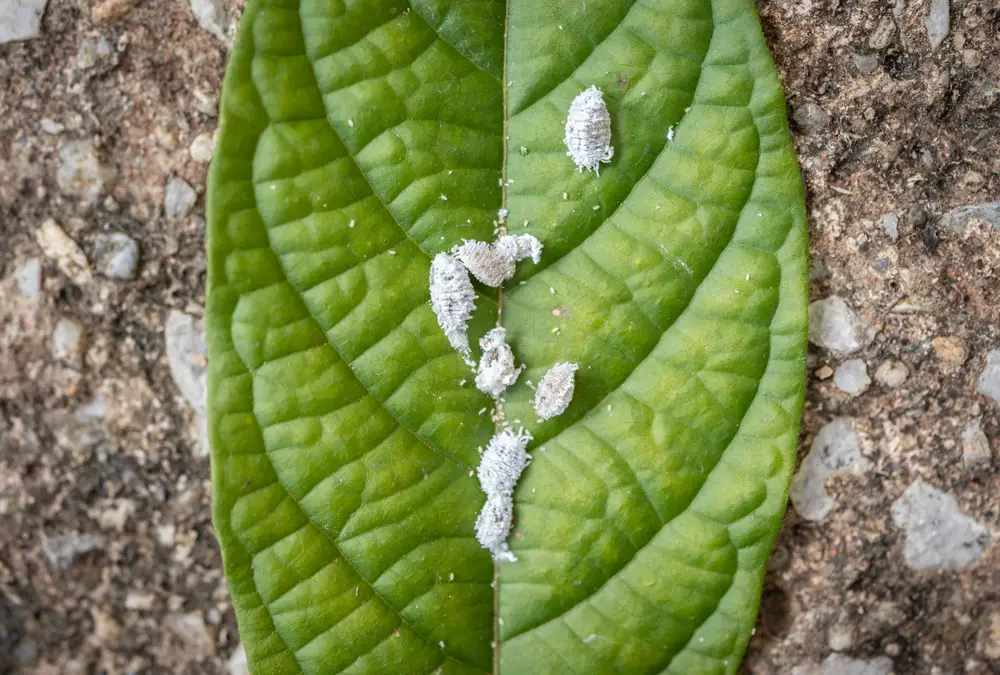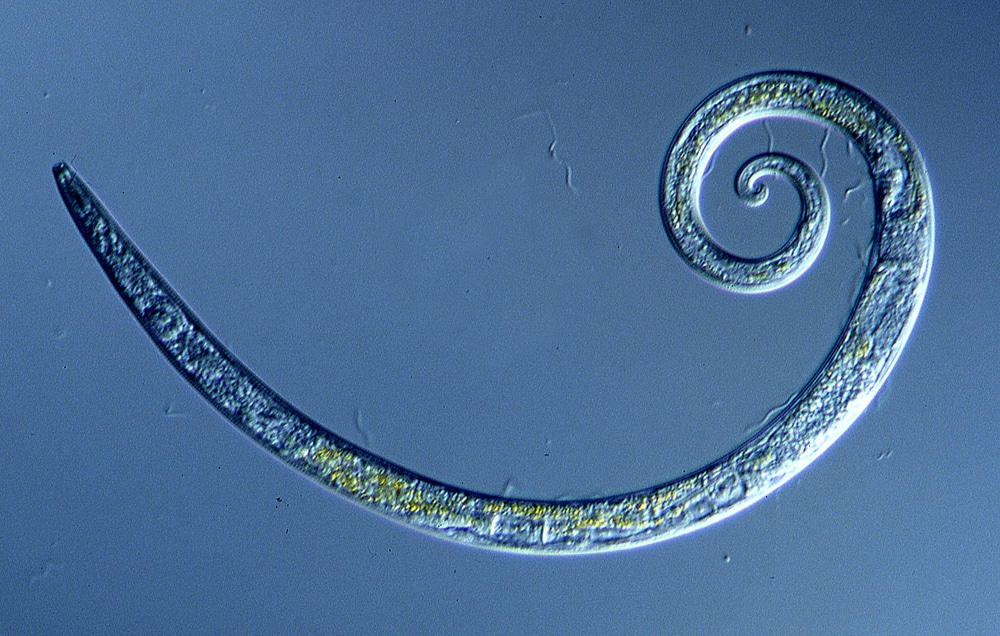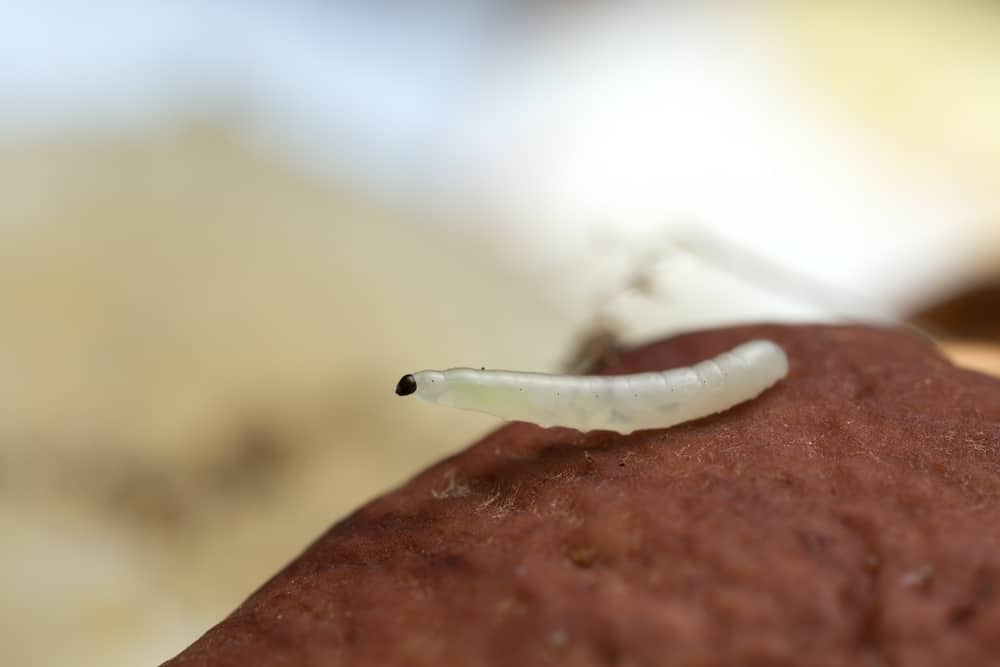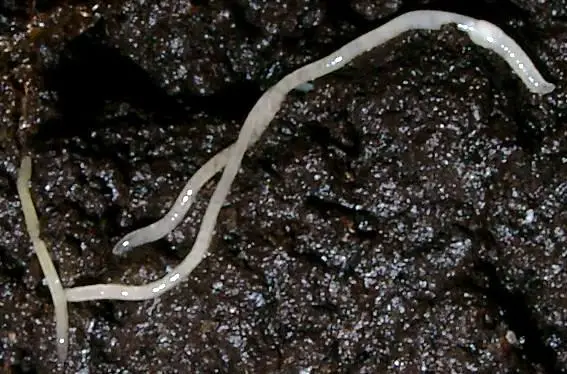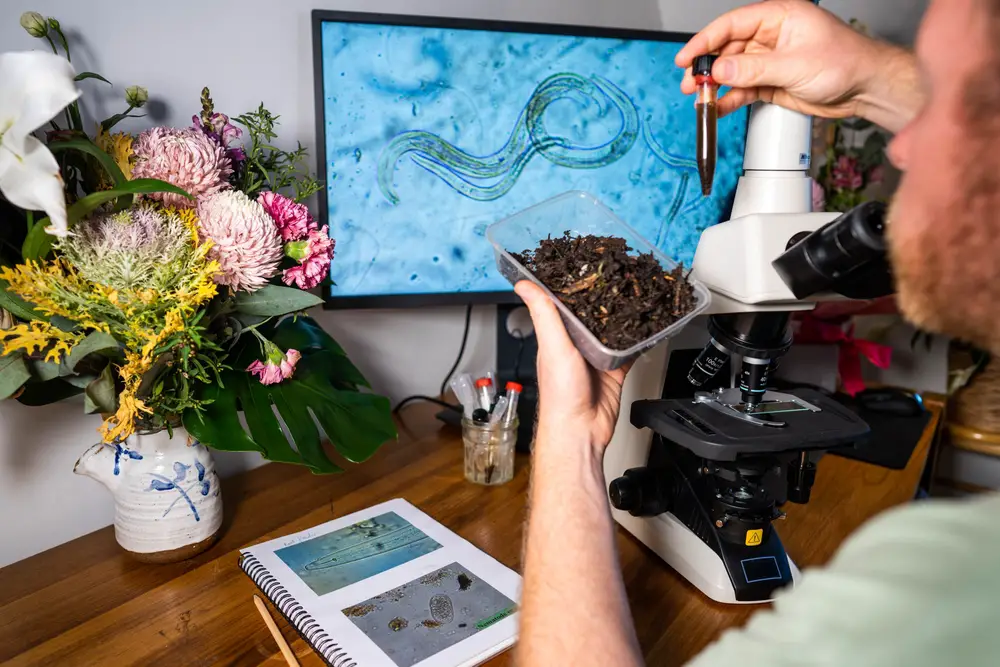Are you seeing brown spots on bell peppers? You’re probably wondering what it means and whether they make the fruit unsafe to eat.
Since my peppers were suffering a similar fate, I decided to get to the root of the problem.
Here’s what I found out:
The main cause of brown spots on bell peppers is rot. Several types of rot can infect your plant. Some are caused by fungi, whereas others are simply environmental.
In this post, I’ll talk about each possible cause and how you can treat it. Let’s get started!
What Causes Brown Spots on Bell Peppers?
Bell peppers are part of the perennial nightshade, or Solanaceae, family.
Native to Central America and Mexico, there are more than 30 species of these edible fruits.
The fruits themselves are prone to diseases and infections. If these problems are environmental, you can throw out the infected part and eat the rest of the fruit.
However, if they’re fungus-based, it’s better if you dispose of the entire plant.
Let’s talk about each condition and its symptoms. I’ll also share with you a few basic tips on how to treat these infections and keep them from recurring.
Anthracnose
Anthracnose, or black spot disease, is caused by the fungus Colletotrichum.
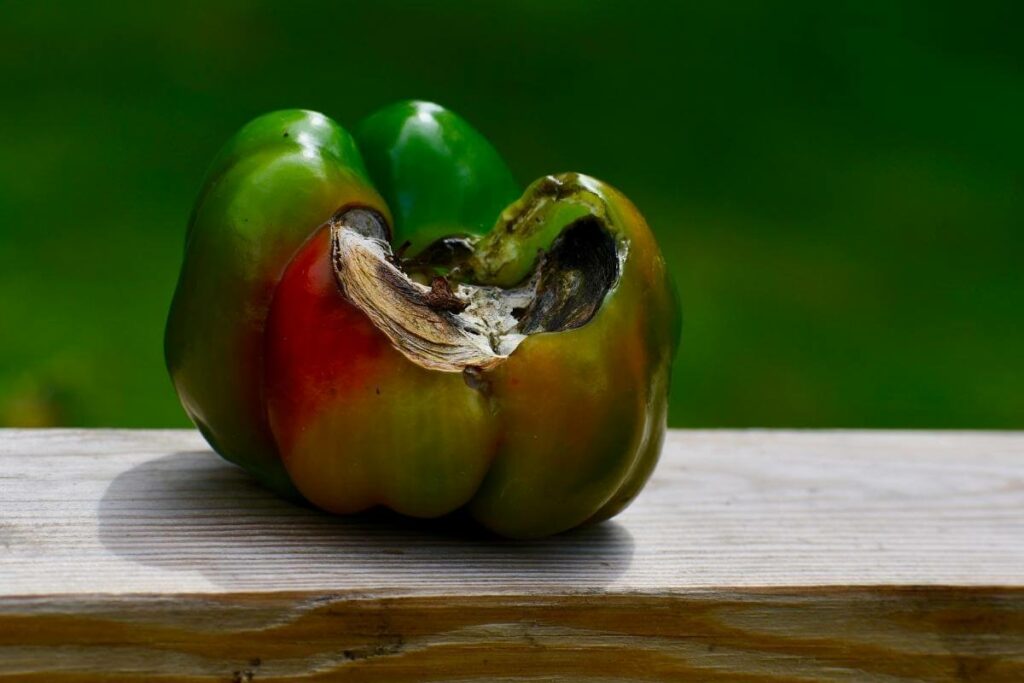
It starts as sunken brown spots on the pepper. The fungus can quickly spread to other parts of the fruit as well.
Then, as the spots grow in size, you may notice pink spores starting to appear within them. They’re easily transmitted to other pepper plants via rain and wind.
These spores bury themselves in the soil to escape the harsh winter months. Not only that, but they’re hardy enough to survive compost. This makes them extremely difficult to get rid of.
The only way you can eliminate anthracnose from your plant is to pull out the infected plant, along with its fruit.
Make sure you fully destroy it and throw everything out.
Be Careful: Don’t bother composting the material. The fungus can stay in the compost pile for up to a year, or longer.
Blossom End Rot
Blossom end rot is caused by environmental problems, rather than fungal or bacterial.
It’s almost always a result of calcium deficiency in the fruit. It’s a pretty common disease and is commonly referred to by vegetable growers as BER.
One cause of calcium deficiency is giving the plant too much fertilizer in a short amount of time.
Another reason for blossom end rot is uneven watering. The reason is that having too little or too much water can significantly affect how the plant absorbs calcium.
This usually happens when the plant is left in soggy, overwatered soil. All these factors combined can hinder the amount of calcium the fruit takes in.
Consequently, the fruit matures with dark-colored leathery spots on its bottom end. They first appear to be tan-colored, then they slowly become darker.
They may also have a leathery, sunk-in appearance.
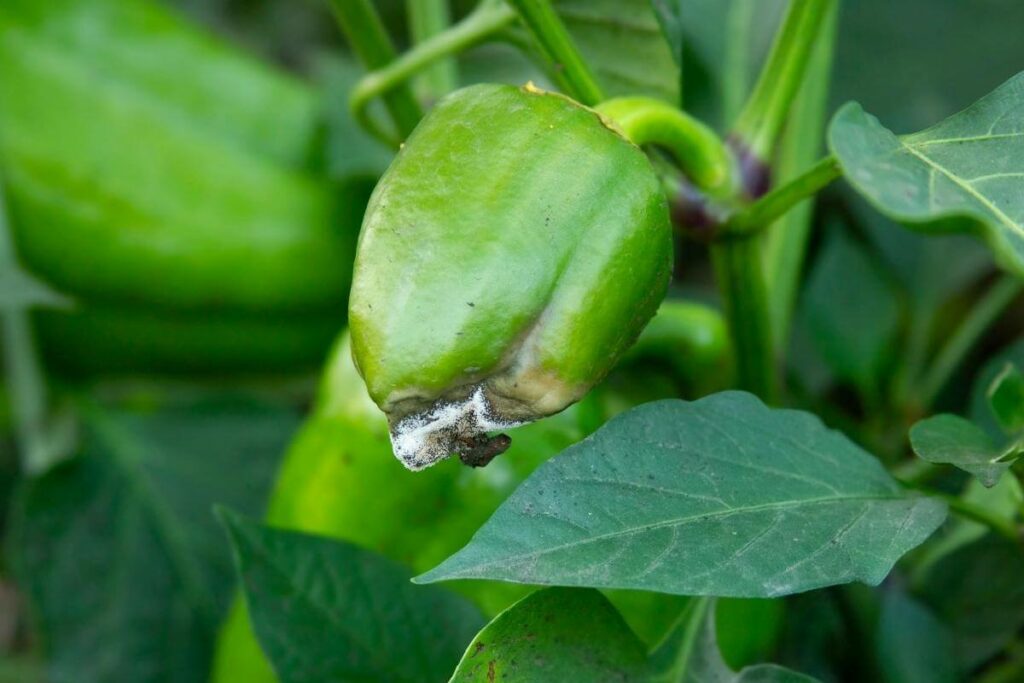
Sometimes, blossom end rot results in a secondary pathogen that will also attack the fruit. One of its symptoms is a brown, fuzzy-like growth, which causes the whole fruit to rot.
The good news is that blossom end rot doesn’t spread, so the rest of your bell pepper plants are safe.
Here are a few tips to keep in mind when treating blossom end rot:
- Give your plants two to four inches of water each week
- Spray plants at their base with a calcium or kelp solution
- During planting, add materials high in calcium, such as gypsum or oyster shells
- Spread mulch over the top layer of soil to preserve moisture levels
- Opt for organic fertilizers, as opposed to those with a high nitrogen content
- Avoid using anything that contains magnesium as it slows down calcium absorption
Sunscald
As you can guess from the name, sunscald is when the fruit gets sunburned.
It’s caused by extreme exposure to sunlight. This disease usually affects the younger, more vulnerable parts of the plant.
As opposed to blossom end rot, which affects the bottom or lower parts of the pepper, this disease mainly affects the sides of the fruit.
Unfortunately, there’s nothing you can do to decrease the amount of sunlight your plant gets.
What You Can Do: Use row covers to shield the exposed fruit. They protect the plants from intense sunlight during the hot summer months.
Wet Rot
Another disease caused by a fungus is wet rot, which commonly occurs in humid, moist areas.
The fungus, Choanephora cucurbitarum, infects fruits that have been damaged during transport or harmed by insects.
When a bell pepper is infected by wet rot, black and dark gray spots begin to appear. In addition, you may see silver, hairy growths on the tissues of the fruit.
After a while, the fruit itself turns black and begins to rot. Another symptom is that the fruit will start to wilt, even when conditions are optimal.
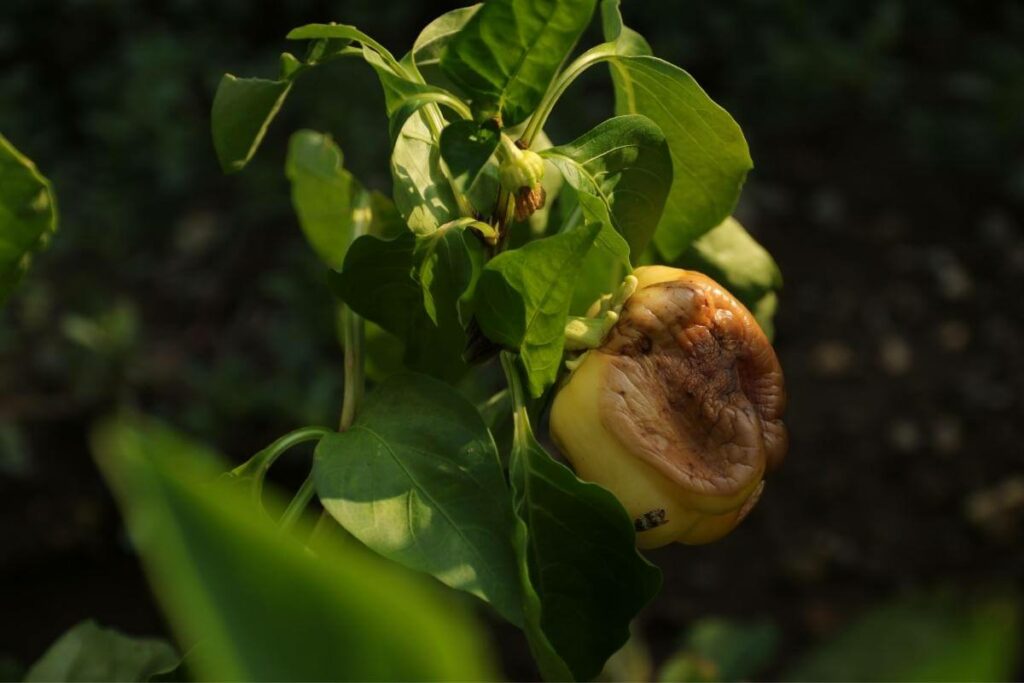
This may also affect young fruits, usually near the tip of the blossom.
Bell pepper fruits are susceptible to wet rot disease in early fall and late spring. During this time, moisture levels are at their highest, especially in tropical climates.
Once a bell pepper plant is contaminated by Chaonephora cucurbitarum, there’s no way to treat it; you have to destroy it.
The best thing you can do is prevent healthy plants from getting infected.
Check out these preventative measures to keep your bell peppers disease-free:
- Improve soil drainage
- Keep the leaves as dry as possible
- Reduce the use of nutrients
- Regularly remove weeds in between the plants and around the field
The Takeaway
Growing your own bell peppers is a great way to incorporate nutrients and vitamins into your diet.
Plus, they’re easy-going plants that can thrive year-round if properly cared for.
That being said, they can be vulnerable in the face of several crippling diseases.
Now, you probably have a good idea of why there are brown spots on your bell peppers. You also know what they mean and how you can prevent them.
Remember to check the location of the spots. That should give you a pretty accurate description of which disease is the culprit.
Once you know that, it’s time to start getting rid of the problem from your garden once and for all!

